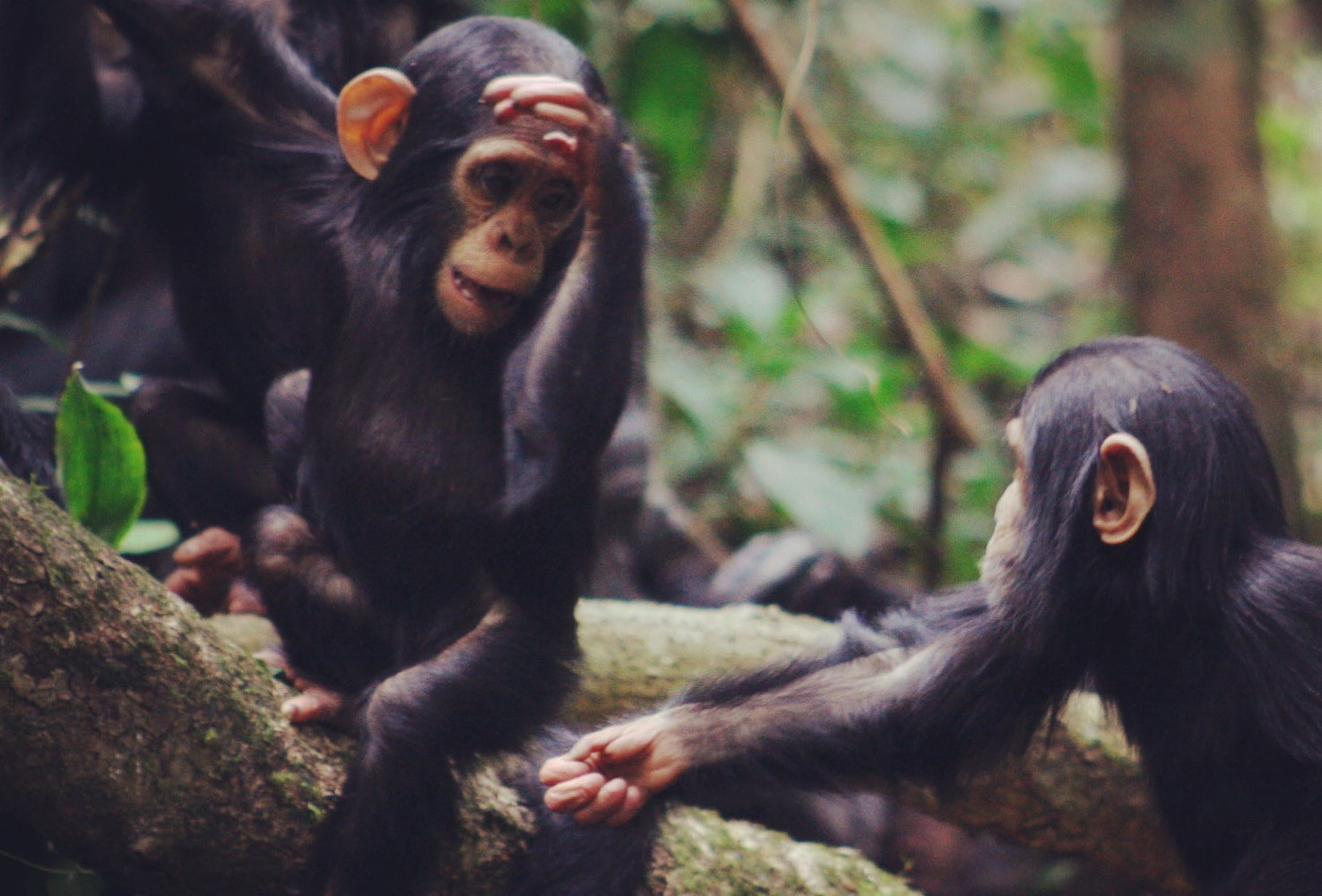Chimpanzee gestures follow the same laws as human language
- Wednesday, February 13, 2019
New research has revealed that chimpanzees' gestural communication follows the same mathematical patterns – known as linguistic laws – as are seen in human language, indicating that the gestures of our primate cousins may be more similar to our own language than previously thought.

An infant chimpanzee using the "reach" gesture during play. © Dr Catherine Hobaiter
The study, published today in Proceedings of the Royal Society B, was led by Masters student Raphaela Heesen and Professor Stuart Semple from the University’s Department of Life Sciences. They looked at two particular linguistic laws - Zipf's law of abbreviation, which predicts that more commonly used words tend to be shorter, and Menzerath's law, which predicts that larger linguistic structures are made up of shorter parts (e.g. longer words are made up of shorter syllables). While these laws are known to hold in many different languages, they had never previously been explored in the gestural communication of animals.
The researchers studied videos of gestures made by wild chimpanzees living in Uganda's Budongo Forest Reserve. They focussed on gesturing during play as this is a context where they are most frequently used, both alone and in sequences. They measured the length of over 2000 play gestures, of 58 different types, and found that - just as predicted by the two linguistic laws - more frequently used gestures were shorter in duration, and in longer sequences, the average gesture duration was also shorter.
Lead author of the study, Raphaela Heesen, said: "Primate gestural communication is, of course, very different to human language, but our results show that these two systems are underpinned by the same mathematical principles. We hope that our work will pave the way for similar studies, to see quite how widespread these laws might be across the animal kingdom."
Find out more about the Department of Life Sciences, including our research and the courses we deliver, here.
